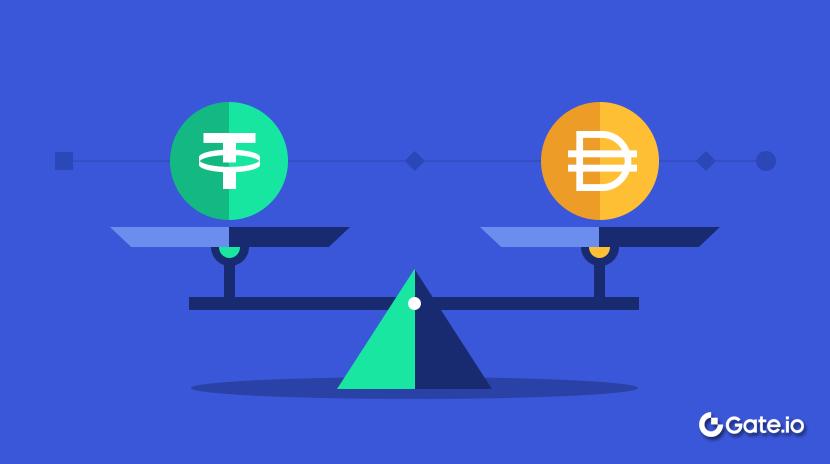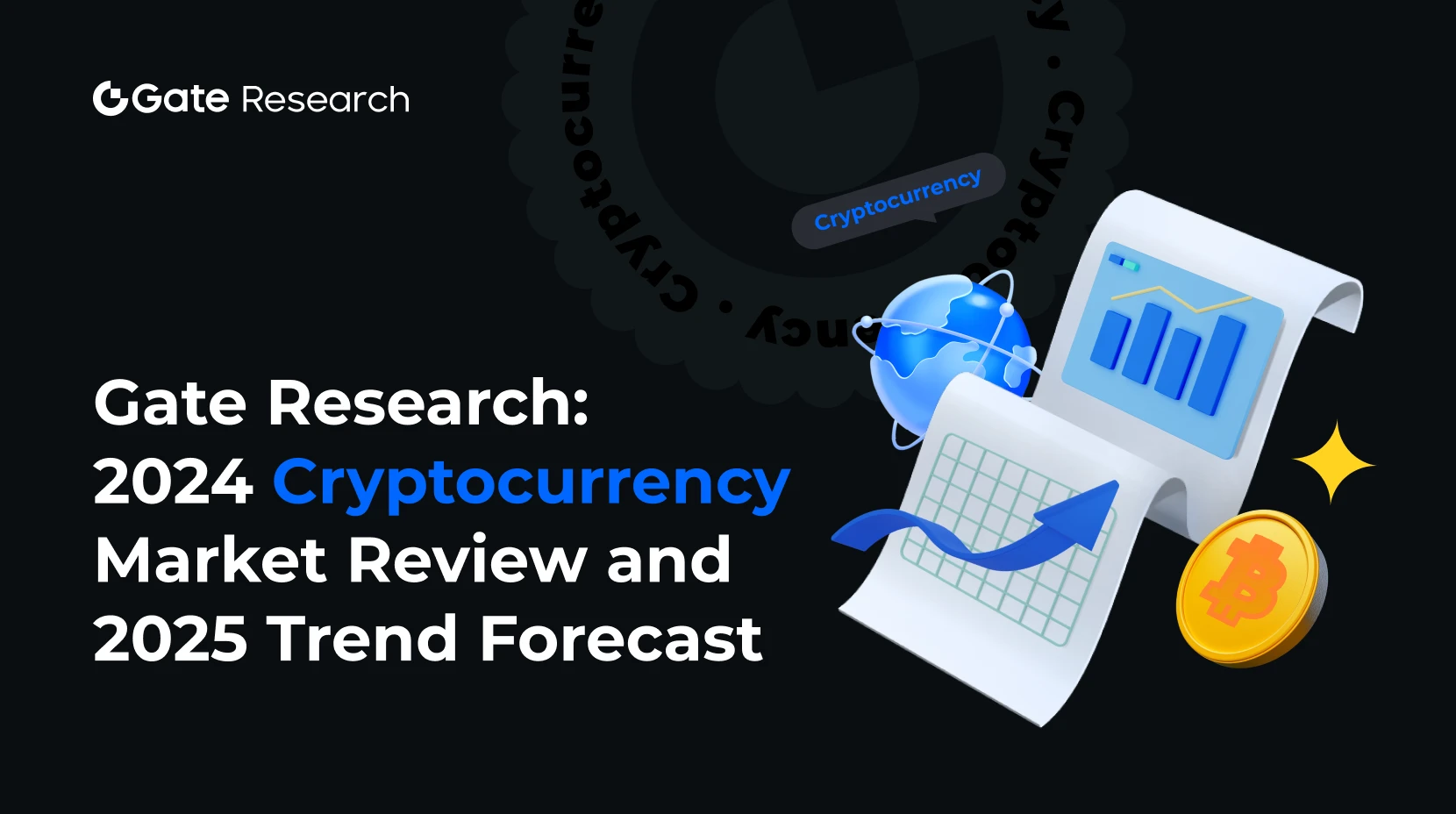تحليل طرح Circle IPO: الإمكانيات النمو وراء الهوامش الصافية المنخفضة
يتتبع هذا المقال رحلة سيركل التي استغرقت سبع سنوات للذهاب إلى الإكتتاب العام، محللاً الحوكمة الشركية، وهيكل الأعمال، ونموذج الربح لكشف الإمكانات النمو والمنطق الرأسمالي وراء "هوامشها الصافية المنخفضة".
في الوقت الذي تعمل فيه الصناعة على تسريع اندماجها ، فإن قرار Circle بطرح أسهمها للاكتتاب العام يروي قصة متناقضة على ما يبدو ولكنها مقنعة - انخفاض الهوامش الصافية ولكن إمكانات النمو الهائلة. فمن ناحية، تفتخر بشفافية عالية، وامتثال تنظيمي قوي، ودخل احتياطي مستقر. من ناحية أخرى ، تبدو ربحيتها "متواضعة" بشكل مدهش ، بهامش صاف لعام 2024 يبلغ 9.3٪ فقط. لا ينبع "عدم الكفاءة" السطحي هذا من نموذج أعمال معيب ولكنه يكشف عن استراتيجية نمو أعمق: مع تلاشي فوائد أسعار الفائدة المرتفعة وتزايد تعقيد تكاليف التوزيع ، تقوم Circle ببناء بنية تحتية مستقرة قابلة للتطوير بدرجة كبيرة ، والامتثال أولا ، وإعادة استثمار الأرباح بشكل استراتيجي في توسيع حصة السوق والنفوذ التنظيمي.
باستخدام رحلة الاكتتاب العام لمدة سبع سنوات من Circle كإطار، سيقوم هذا المقال بتحليل الإمكانات النمو والمنطق الرأسمالي وراء هذه الهوامش الصافية المنخفضة، بما في ذلك حوكمة الشركات، وهيكل الأعمال، ونماذج الربحية.
1. ماراثون طويل للطرح العام الأولي لمدة سبع سنوات: تاريخ تطور تنظيم العملات الرقمية
1.1 ثلاث محاولات لتحقيق رأس المال وتحولات في المنهجية (2018-2025)
يمكن النظر إلى رحلة الاكتتاب العام لشركة Circle على أنها دراسة حالة حية للعبة الديناميكية بين شركات التشفير والأطر التنظيمية. حدثت محاولة الاكتتاب العام الأولية في عام 2018 خلال فترة كان فيها للجنة الأوراق المالية والبورصات الأمريكية (SEC) موقف غامض بشأن تصنيف الأصول المشفرة. في ذلك الوقت ، أنشأت الشركة نموذج "المدفوعات + التداول" ثنائي المحرك من خلال الاستحواذ على بورصة Poloniex وحصلت على تمويل بقيمة 110 ملايين دولار من مستثمرين مثل Bitmain و IDG Capital و Breyer Capital. ومع ذلك، تسببت أسئلة المنظمين بشأن امتثال أعمال البورصة، إلى جانب السوق الهابطة المفاجئة، في انخفاض تقييمها من 3 مليارات دولار بنسبة 75٪ إلى 750 مليون دولار، مما كشف هشاشة نماذج أعمال التشفير المبكرة.
عكست محاولة SPAC لعام 2021 قيود تفكير المراجحة التنظيمية. على الرغم من أن الاندماج مع Concord Acquisition Corp سمح للشركة بتجاوز التدقيق الصارم للاكتتاب العام التقليدي ، إلا أن تحقيقات هيئة الأوراق المالية والبورصات في المعالجة المحاسبية للعملات المستقرة أصابت عصبا حرجا - مما يتطلب من Circle إثبات أنه لا ينبغي تصنيف USDC كأوراق مالية. تسبب هذا التحدي التنظيمي في فشل الصفقة ، لكنه دفع بشكل غير متوقع تحولا حاسما: تصفية الأصول غير الأساسية (مثل بيع Poloniex مقابل 150 مليون دولار لمجموعة استثمارية) ، وإنشاء تركيز استراتيجي على "Stablecoin-as-a-Service". منذ تلك اللحظة وحتى اليوم ، التزمت سيركل التزاما تاما ببناء امتثال USDC والتقدم بنشاط للحصول على تراخيص تنظيمية في العديد من البلدان على مستوى العالم.
قرار الاكتتاب العام في عام 2025 يمثل نضوج مسار صناعة العملات المشفرة نحو التمويل. يتطلب القائمة على بورصة نيويورك ليس فقط الكشف الكامل وفقًا لتنظيم S-K، ولكنه يلزم أيضًا بفحوصات مراجعة التحكم الداخلي بموجب قانون ساربانز-أوكسلي. من المثير للاهتمام بشكل خاص أن تكشف الإيداع S-1 للمرة الأولى عن آلية إدارة صندوق الاحتياطي: حوالي 32 مليار دولار من الأصول، يتم تخصيص 85% منها لاتفاقيات الشراء بالعكس خلال الليل من خلال صندوق Circle Reserve التابع لـ BlackRock، بينما يتم إيداع 15% مع المؤسسات المالية المهمة من الناحية النظامية مثل BNY Mellon. تبني هذه العملية الشفافة إطارًا تنظيميًا مكافئًا تقريبًا لصناديق السوق النقدية التقليدية.
1.2 التعاون مع كوين بيس: من بناء النظام البيئي إلى ديناميات العلاقة الدقيقة
منذ إطلاق USDC، كانت الشركتان قد شراكة من خلال مركز المجموعة. عندما تأسست مركز في عام 2018، كانت كوينبيس تمتلك 50% من حقوق الملكية وافتتحت السوق بسرعة من خلال نموذج "الإخراج التقني مقابل الوصول إلى حركة المرور". وفقًا لتقديم طلب الاكتتاب العام لـ Circle لعام 2023، قامت بإعادة شراء الـ 50% المتبقية من حقوق ملكية مركز المجموعة من كوينبيس بقيمة 210 مليون دولار في أسهم، وتم إعادة التفاوض على اتفاقية تقاسم الأرباح المتعلقة بـ USDC أيضًا.
اتفاقية تقاسم الأرباح الحالية تعكس لعبة ديناميكية. وفقًا لتقديم النموذج S-1، تشترك الطرفان في دخل الاحتياطيات بالدولار الأمريكي بناءً على نسبة معينة (مع الوثيقة تذكر أن كوينبيس تشارك حوالي 50٪ من دخل الاحتياطيات)، وترتبط نسبة تقاسم الأرباح بكمية الدولار الأمريكي المزودة من قبل كوينبيس. البيانات العامة من كوينبيس تظهر أنه في عام 2024، عقدت المنصة حوالي 20٪ من إجمالي الدولار الأمريكي المتداول. مع حصة إمداد 20٪، أخذت كوينبيس حوالي 55٪ من دخل الاحتياطيات، مما يزرع قضايا محتملة بالنسبة لسيركل: مع توسع الدولار الأمريكي خارج نظام كوينبيس، سترتفع التكلفة الحدية بشكل غير خطي.
2 إدارة الاحتياطي الدولار الأمريكي وهيكل المساهمة والملكية
2.1 إدارة الاحتياطي المتدرجة
إدارة الاحتياطي USDC تظهر ميزة "تدرج السيولة" واضحة:
- النقد (15٪): يُحتفظ به في GSIBs مثل BNY Mellon، ويُستخدم للرد على الاستردادات غير المتوقعة
- صندوق الاحتياطي (85٪): يتم تخصيصه من خلال صندوق الاحتياطي المدار بواسطة بلاك روك
منذ عام 2023، تم تقييد احتياطي USDC إلى الأرصدة النقدية في حسابات البنوك وصندوق الاحتياطي لدائرة. محفظة الأصول للصندوق تتضمن أساساً أوراق خزانة الولايات المتحدة ذات الاستحقاق المتبقي لا يتجاوز ثلاثة أشهر واتفاقات إعادة شراء الخزانة الأمريكية خلال الليل. مدة الاستحقاق المتوسطة للدولارات في المحفظة لا تتجاوز 60 يومًا، ومدة الاستحقاق المتوسطة للدولارات لا تتجاوز 120 يومًا.
2.2 فئات الأسهم والحوكمة المتدرجة
وفقًا للنموذج S-1 المقدم إلى هيئة الأوراق المالية والبورصات، بعد القائمة، ستعتمد Circle هيكل أسهم ثلاثي المستويات:
- أسهم الدرجة أ: الأسهم العادية الصادرة خلال الإدراج الأولي، حيث تمتلك كل سهم حق التصويت
- حصة فئة ب: تمتلكها المؤسسان جيرمي ألير وباتريك شون نيفيل، حيث تحمل كل حصة خمسة حقوق تصويت، ولكن يتم تقييد إجمالي حقوق التصويت بنسبة 30%، مما يضمن أن يحتفظ الفريق المؤسس الأساسي حتى بعد الإدراج العام الأولي بالقيادة في اتخاذ القرارات
- الأسهم الفئة C: الأسهم غير القابلة للتصويت، قابلة للتحويل في ظروف معينة، مما يضمن الامتثال لقواعد حوكمة بورصة نيويورك
تم تصميم هيكل المساهمة هذا لتحقيق توازن بين تمويل السوق العام مع استقرار استراتيجي طويل الأجل للشركة، مع الحفاظ على السيطرة التنفيذية على القرارات الرئيسية.
توزيع المساهمة التنفيذية والمؤسسية 2.3
وفقًا لتقديم S-1، يمتلك الفريق التنفيذي كمية كبيرة من الأسهم. في الوقت نفسه، العديد من رواد الأعمال المعروفين والمستثمرين المؤسسيين - مثل General Catalyst و IDG Capital و Breyer Capital و Accel و Oak Investment Partners و Fidelity - يمتلك كل منهم أكثر من 5٪ من حقوق الملكية. تمتلك هذه المؤسسات مجتمعة أكثر من 130 مليون سهم. من المتوقع أن تجلب لهم تقييمات IPO بقيمة 5 مليارات دولار عوائد كبيرة.
3 نموذج ربحي وتحليل توزيع الإيرادات
3.1 نموذج العائد والمقاييس التشغيلية
- مصادر الإيرادات: دخل الاحتياطي هو مصدر الإيرادات الأساسي لدى Circle. يتم دعم كل رمز USDC بنسبة 1:1 بالدولارات الأمريكية، وتكون أصول الاحتياطي في الغالب من الأوراق المالية الحكومية الأمريكية ذات الأجل القصير واتفاقيات إعادة الشراء، مما يولد دخل فائدة مستقر في بيئة فائدة مرتفعة. وفقًا لتقديم S-1، بلغ إجمالي الإيرادات في عام 2024 مبلغ 1.68 مليار دولار، وجاء 99% منها (بما يقرب من 1.661 مليار دولار) من دخل الاحتياطي.
- مشاركة الإيرادات مع الشركاء: ينص اتفاق التعاون مع كوينبيس على أن كوينبيس يحصل على 50% من الدخل الاحتياطي بناءً على كمية USDC التي يحتفظ بها. يقلل هذا بشكل كبير من الدخل الفعلي الذي يحتفظ به Circle ويسحب أداء الأرباح الصافية. على الرغم من أن هذا التقسيم في الإيرادات يؤثر على الربحية، إلا أنه تكلفة ضرورية لبناء النظام البيئي ودفع اعتماد واسع الانتشار لـ USDC.
- دخل آخر: بالإضافة إلى دخل الفائدة من الاحتياطيات، تحقق سيركل أيضًا إيرادات من خدمات المؤسسات، وخدمات تلبيس الدولار الرقمي الولايات المتحدة، ورسوم المعاملات عبر السلاسل. ومع ذلك، هذه المساهمات صغيرة، حيث تبلغ إجمالي 15.16 مليون دولار فقط.
3.2 الاستعجاب من نمو الإيرادات وانخفاض الهامش الربحي (2022-2024)
السائقون الهيكليون الكامنون وراء التناقض السطحي:
- من التنويع إلى التركيز على النواة الواحدة: من عام 2022 إلى عام 2024، زاد إجمالي عائدات Circle من 772 مليون دولار إلى 1.676 مليار دولار، بمعدل نمو سنوي مركب (CAGR) قدره 47.5٪. أصبح دخل الاحتياطات المصدر الأكثر أهمية للشركة، حيث ارتفع من 95.3٪ من إجمالي الدخل في عام 2022 إلى 99.1٪ في عام 2024. يعكس هذا التركيز المتزايد نجاح استراتيجية "العملة المستقرة كخدمة" الخاصة به، ولكنه يشير أيضًا إلى الاعتماد المتزايد على تغييرات أسعار الفائدة الاقتصادية الكبرى.
- ارتفاع تكاليف التوزيع يضغط على الهامش الإجمالي: ارتفعت تكاليف توزيع Circle والمعاملات من 287 مليون دولار في عام 2022 إلى 1.01 مليار دولار في عام 2024، بزيادة تبلغ 253%. هذه التكاليف مرتبطة أساسًا بإصدار USDC ونظام تسوية الدفع والاسترداد. مع زيادة دوران USDC، ترتفع هذه التكاليف بشكل صارم.
نظرًا لأن مثل هذه التكاليف لا يمكن ضغطها بسهولة، انخفض الهامش الإجمالي لدى Circle بسرعة من 62.8% في عام 2022 إلى 39.7% في عام 2024. وهذا يعكس مخاطر هيكلية في نموذج Circle للعملات المستقرة B2B - على الرغم من أن لديه مزايا في الحجم، إلا أنه قد يواجه ضغطًا على الربحية في دورة انخفاض أسعار الفائدة. - تحقق الربح ولكن نمو هامشي أبطأ: أصبحت شركة Circle رابحة في عام 2023، حيث بلغت الدخل الصافي 268 مليون دولار وهامش صافي بنسبة 18.45٪. بينما استمرت الربحية في عام 2024، بعد خصم تكاليف التشغيل والضرائب، كان الدخل القابل للتوزيع يبلغ فقط 101.25 مليون دولار. بإضافة 54.42 مليون دولار كدخل غير تشغيلي، بلغ الربح الصافي 155 مليون دولار — ولكن الهامش الصافي انخفض إلى 9.28٪، مقارنة بتقريبا النصف عن العام السابق.
- تكاليف جامدة: يجري الإشارة بشكل ملحوظ، في عام 2024، بلغ إنفاق الإدارة العامة والإدارية (G&A) 137 مليون دولار، بزيادة سنوية بنسبة 37.1%، مما يشكل ثلاث سنوات متتالية من النمو. ووفقًا لكشف S-1، ترتبط هذه التكاليف بشكل رئيسي بتطبيقات التراخيص العالمية والتدقيقات وتوسيع فرق الامتثال القانوني، مما يؤكد أن استراتيجية "الامتثال أولاً" قد جلبت صلابة تكاليف هيكلية.
بصفة عامة، انتقلت Circle تمامًا بعيدًا عن "السرد التبادلي" في عام 2022، وصلت إلى نقطة تحول ربحية في عام 2023، وحافظت على الربحية في عام 2024 على الرغم من النمو الأبطأ. هيكلها المالي يتوافق بشكل متزايد مع هياكل المؤسسات المالية التقليدية.
ومع ذلك، فإن هيكل الإيرادات الخاص بها - الذي يعتمد بشكل كبير على انتشارات الفائدة في خزينة الخزانة الأمريكية وحجم الصفقات - يعني أنه إذا انخفضت أسعار الفائدة أو تباطأ نمو USDC، سيتأثر الأداء الربحي مباشرةً. للحفاظ على الربحية المستدامة، ستحتاج Circle إلى تحقيق توازن أكثر بين "تقليل التكاليف" و"توسيع النمو".
قضية أعمق: عيب نموذج الأعمال
مع تزايد USDC كـ "أصول متعددة السلاسل" (بحجم تداول على السلسلة بقيمة 20 تريليون دولار في عام 2024)، تضعف تأثيرات الضربة النقدية لديها، مما يقلل من ربحية الشركة المصدرة. وهذا يعكس تحديات البنوك التقليدية.
3.3 النمو المحتمل خلف الهامش الصافي المنخفض
على الرغم من أن هامش صافي الربح لشركة Circle ما زال يتعرض لضغوط نتيجة لتكاليف التوزيع العالية والإنفاق على الامتثال (حيث كانت نسبة صافي الهامش في عام 2024 فقط 9.3%، بانخفاض قدره 42% عن العام السابق)، إلا أن نموذجها التجاري والبيانات المالية لا تزال تخفي عدة عوامل دافعة للنمو:
- استمرار نمو التداول يدفع دخل احتياطي مستقر: وفقا ل CryptoQuant ، اعتبارا من أوائل أبريل 2025 ، تجاوزت القيمة السوقية ل USDC 60 مليار دولار ، في المرتبة الثانية بعد USDT البالغة 144.4 مليار دولار. بحلول نهاية عام 2024 ، ارتفعت حصة USDC في السوق إلى 26٪. في عام 2025 ، نمت القيمة السوقية لشركة USDC بالفعل بمقدار 16 مليار دولار. بالنظر إلى أنه كان أقل من 1 مليار دولار في عام 2020 ، فإن معدل النمو السنوي المركب من 2020 إلى أبريل 2025 هو 89.7٪. حتى إذا تباطأ النمو في الأشهر الثمانية المتبقية من عام 2025 ، فقد تصل القيمة السوقية ل USDC إلى 90 مليار دولار بحلول نهاية العام ، مما يدفع معدل النمو السنوي المركب إلى 160.5٪. في حين أن دخل الاحتياطي حساس لأسعار الفائدة ، فإن انخفاض أسعار الفائدة يمكن أن يحفز الطلب على USDC ، ويمكن للتوسع القوي على نطاق واسع أن يعوض جزئيا المخاطر الناجمة عن انخفاض أسعار الفائدة.
- تحسين البنية التحتية لتكاليف التوزيع: على الرغم من دفع حصص إيرادات مرتفعة لـ كوينبيز في عام 2024، إلا أن هذه التكلفة لا تتناسب بشكل خطي مع التداول. على سبيل المثال، دفع دفعة واحدة بقيمة 60.25 مليون دولار إلى بنانس تعزز إمدادات بروتوكول USDC الخاصة بها من مليار دولار إلى 4 مليارات دولار — مما يحقق تكاليف اكتساب عملاء أقل بكثير من كوينبيز. جنبًا إلى جنب مع المعلومات في S-1، يشير شراكة سيركل-بنانس إلى أن سيركل قد تحقق نموًا في قيمة السوق بتكلفة أقل في المستقبل.
- التقييم المحافظ يقلل من ندرة السوق: يشير تقييم الاكتتاب العام لشركة Circle البالغ 4-5 مليارات دولار إلى نسبة P / E تتراوح بين 20 و 25 ضعفا بناء على صافي الربح المعدل البالغ 200 مليون دولار ، مقارنة بشركات الدفع التقليدية مثل PayPal (19x) و Square (22x). هذا يشير إلى أن السوق ينظر إليها على أنها أعمال "منخفضة النمو ومستقرة الربح". ومع ذلك ، فإن هذا التقييم لا يتم تسعيره بالكامل في ندرته باعتباره المصدر الوحيد المستقر الخالص المدرج في أسواق الأسهم الأمريكية. غالبا ما تحصل الشركات في القطاعات المتخصصة على علاوة تقييم - وهو عامل لم تستفد منه Circle بالكامل. بالإضافة إلى ذلك ، إذا تم سن تشريع العملة المستقرة ، فقد يحتاج المصدرون الخارجيون إلى إصلاح هياكل الاحتياطي ، في حين أن إطار الامتثال الحالي ل Circle يمكن أن ينتقل بسلاسة ، مما يخلق "مكاسب تنظيمية غير متوقعة". قد يؤدي هذا إلى مكاسب كبيرة في حصة USDC في السوق.
- تظهر القيمة السوقية للعملات المستقرة مرونة مقارنة بالبيتكوين: تميل القيمة السوقية للعملات المستقرة إلى البقاء مستقرة حتى عندما تنخفض أسعار البيتكوين بشكل حاد ، مما يدل على ميزتها الفريدة في أسواق العملات المشفرة المتقلبة. خلال الأسواق الهابطة ، غالبا ما يبحث المستثمرون عن أصول الملاذ الآمن ، واستقرار نمو العملة المستقرة يجعل Circle "ملاذا آمنا" محتملا لرأس المال. بالمقارنة مع شركات مثل Coinbase أو MicroStrategy التي تعتمد بشكل كبير على اتجاهات السوق ، فإن Circle - باعتبارها المصدر الرئيسي ل USDC - تبني إيراداتها بشكل أكبر على حجم معاملات العملة المستقرة ودخل فوائد الأصول الاحتياطية ، بدلا من التعرض المباشر لتقلبات أسعار الأصول المشفرة. وبالتالي ، تتمتع Circle بمقاومة أقوى للسوق الهابطة وربحية أكثر استقرارا. وهذا يجعله أحد أصول التحوط المحتملة في المحافظ الاستثمارية ، خاصة خلال الأسواق المضطربة.
4 مخاطر - اضطراب في سوق العملات المستقرة
4.1 الشبكة المؤسسية لم تعد خندقًا قويًا
- ربط الفائدة كسيف ذو حدين: على الرغم من أن Coinbase تأخذ 55٪ من دخل الاحتياطي ، إلا أنها تمتلك 20٪ فقط من حصة USDC. ينشأ تقسيم الإيرادات غير المتماثل هذا من اتفاقية قديمة من اتحاد المركز لعام 2018 ، مما يؤدي فعليا إلى دفع Circle 0.55 دولار كتكلفة لكل 1 دولار من الدخل الجديد - أعلى بكثير من متوسط الصناعة.
- مخاطر قفل النظام البيئي: تكشف اتفاقية الدفع المسبق الموقعة مع Binance (بينانس) عن عدم التوازن في التحكم في قناة التوزيع. وإذا طالبت البورصات الكبرى بشكل جماعي بإعادة التفاوض على الشروط، فقد يؤدي ذلك إلى حلقة مفرغة من "تكاليف التوزيع المتصاعدة".
تأثير مزدوج لتقدم تشريعات العملات المستقرة 4.2
- الضغط على توطين الأصول الاحتياطية: يتطلب التشريع المقترح من الجهات الصادرة الاحتفاظ بـ 100% من الاحتياطيات (النقد وما يعادله نقدًا)، والأولوية لاستخدام مؤسسات الودائع المُرخصة في الولايات المتحدة اتحاديًا أو على مستوى الولاية كأوصياء. حاليًا، يتم تخزين 15% فقط من نقد Circle في المؤسسات المحلية مثل BNY Mellon. قد تؤدي التعديلات التنظيمية إلى تكلفة توجيه رأس المال مرة واحدة تصل إلى مئات الملايين من الدولارات.
5 تأملات استراتيجية — نافذة للكسر للمخترقين
5.1 الأساس الرئيسي: التموضع الاستراتيجي في عصر الامتثال
- شبكة تنظيمية مزدوجة: بنى Circle مصفوفة تنظيمية تغطي الولايات المتحدة، أوروبا، واليابان — نوع من رؤوس الأموال المؤسسية التي يصعب على الشركات التقليدية مثل PayPal تكرارها. بمجرد تنفيذ ”قانون العملة المستقرة للدفع“، يُتوقع أن تنخفض نسبة تكاليف الامتثال إلى الإيرادات بشكل كبير، مما يشكل ميزة هيكلية.
- موجة الاستبدال للدفع عبر الحدود: من خلال شراكتها مع Wise، أطلقت Circle خدمات "تسوية USDC الفورية"، التي خفضت تكاليف الدفع عبر الحدود الشركات بشكل كبير. إذا تمكنت من الحصول على جزء من حجم التسوية السنوي لشركة SWIFT، فإنه يمكن أن يجلب حجم دورة تداول جديدة كبيرة، مع موازنة تأثير انخفاض أسعار الفائدة.
- البنية التحتية المالية B2B: ضمن نظام الدفع للتجارة الإلكترونية في Stripe ، زادت نسبة تسويات USDC بشكل كبير. يمكن أن يساعد بروتوكول تحويل العملات الورقية التلقائي الشركات على توفير تكاليف التحوط من العملات الأجنبية بشكل كبير. إن التوسع في سيناريوهات "التمويل المدمج" هذه يمكن USDC من التطور إلى ما هو أبعد من مجرد وسيط معاملة ونحو وظيفة تخزين القيمة.
5.2 الهامش النمو: اللعبة بين دورات أسعار الفائدة واقتصاديات الحجم
- استبدال عملات الأسواق الناشئة: في المناطق ذات التضخم المرتفع ، استحوذت USDC بالفعل على جزء من السوق لمعاملات الصرف الأجنبي بالدولار الأمريكي. إذا أدت تخفيضات أسعار الفائدة الفيدرالية إلى تسارع انخفاض قيمة العملات المحلية ، فقد تؤدي عملية "الدولرة الرقمية" هذه إلى تعزيز نمو الدورة الدموية بشكل كبير.
- قناة إعادة تحويل الدولار الخارجي: من خلال شراكات مع BlackRock لاستكشاف مشاريع الأصول المرمزة، تقوم Circle بتحويل بعض الودائع الدولارية الأمريكية الخارجية إلى أصول على السلسلة. قيمة هذا "قناة الرأسمال" لم تعكس بعد في التقييمات الحالية.
- تجسيد الأصول في العالم الحقيقي: بعد استحواذها على الشركات التكنولوجية ذات الصلة، قامت Circle بإطلاق خدمات الأصول المجسدة التي وصلت إلى إدارة AUM الأولية (الأصول تحت الإدارة)، مما أدى إلى توليد دخل إدارة سنوي كبير.
- فترة الاحتياطي النسبي للفائدة: مع ظل السعر الفيدرالي للأموال ما زال مرتفعًا، يجب على Circle دفع حجم تداولها إلى ما وراء الحد الحرج من خلال عملية العولمة المسرعة قبل أن تكون توقعات خفض الأسعار مدرجة بالكامل، بحيث يمكن لتأثيرات الحجم تعويض تأثير انخفاض أسعار الفائدة.
- فترة النافذة التنظيمية: قبل تنفيذ "قانون الدفع بالعملات المستقرة" بالكامل، يجب على Circle الاستفادة من ميزة الامتثال الحالية لديها للتقاط العملاء المؤسسيين، وتوقيع اتفاقيات تسوية حصرية مع أفضل صناديق التحوط - لبناء حواجز الخروج.
- تعميق مجموعة خدمات الشركات: من خلال تغليف واجهات برمجة تطبيقات التوافق الخاصة بها وأدوات التدقيق على السلسلة الرئيسية في "سحابة خدمات مالية Web3"، يمكن لدائرة أن تفرض رسوم اشتراك SaaS على البنوك التقليدية، مما يفتح طريقًا لمنح منحة ثانية إلى جانب دخل الاحتياطي.
تكمن خلف الهامش الصافي المنخفض لدى Circle استراتيجية مدروسة لـ "تداول الربح من أجل التوسع" خلال مرحلة التوسع الاستراتيجي. بمجرد أن يتجاوز تداول USDC 80 مليار دولار، ويصل حجم إدارة الأصول RWA واختراق الدفع عبر الحدود إلى نقاط انفراج، ستتغير منطقية تقدير الشركة بشكل جوهري - متطورة من "مُصدر للدولار الثابت" إلى "مشغل لبنية الدولار الرقمي".
يتطلب هذا من المستثمرين إعادة تقييم السعر الاحتكاري الخاص به من آثار الشبكة مع أفق استثماري يمتد لمدة 3-5 سنوات. في هذا التقاطع التاريخي بين النظام المالي التقليدي واقتصاد العملات المشفرة، فإن IPO لدى Circle ليس مجرد معلم في تطورها الخاص، ولكنه أيضًا اختبارًا للقيمة وإعادة التقييم لصناعة بأكملها.
حول Movemaker
موفيميكر هي أول منظمة مجتمعية رسمية تم إطلاقها من قبل مؤسسة آبتوس والتي تم إطلاقها بالتعاون بين Ankaa و BlockBooster، مع التركيز على بناء وتطوير النظام البيئي لآبتوس الناطق بالصينية. بصفتها الممثل الرسمي لآبتوس في العالم الناطق بالصينية، تهدف موفيميكر إلى خلق نظام بيئي متنوع ومفتوح ومزدهر لآبتوس من خلال ربط المطورين والمستخدمين ورؤوس الأموال وشركاء النظام البيئي المختلفين.
تنصل:
تم نشر هذه المقالة من [تيكفلو]. حقوق الطبع والنشر تنتمي إلى الكاتب الأصلي [@BlazingKevin_, الباحث في Movemaker]. إذا كان لديك أي اعتراضات على إعادة الطبع، يرجى الاتصال بالبوابة تعلمالفريق سيتولى التعامل معه في أقرب وقت ممكن وفقا للإجراءات ذات الصلة.
تنويه: تعبر وجهات النظر والآراء المعبر عنها في هذه المقالة فقط عن وجهات نظر الكاتب الشخصية ولا تشكل أي نصيحة استثمارية.
تتم ترجمة النسخ الأخرى من المقال بواسطة فريق Gate Learn. قد لا يتم نسخ المقال المترجم أو توزيعه أو نسخه دون ذكر المصدربوابة.ايو.
المقالات ذات الصلة

أفضل 10 شركات لتعدين البيتكوين

ما هي العملات المستقرة (Stablecoins)؟

بوابة البحث: استعراض سوق العملات المشفرة لعام 2024 وتوقعات الاتجاه لعام 2025

دليل لوزارة الكفاءة الحكومية (DOGE)

ما هو USDe؟ كشف أساليب الربح المتعددة لـ USDe


